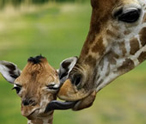- When do the peacocks make piercing calls?
- What is called a “party” when it comes to peafowls?
- When do they make a “hoot dash” display?

One of the most fascinating gifts of nature, peacocks adorn the face of earth with the miraculous beauty of their body. They have been kept in captivity and admired for their matchless array of beautiful colours for thousands of years.
A peacock can be defined as a large colourful pheasant, typically coloured green or blue, that is known for its iridescent tails.
What is honking? Usually referred as the noise made by a car horn, a honk is also the name given to the sound produced by a goose or a peacock. But why do peacocks honk? Here you can clear up several of your confusions about these colourful birds while also learning some fascinating fun facts about them.
In some cultures, they are worshipped as divine while in others these lovely creatures are seen as something bad. There has been extensive scientific debate on the functions of the elaborate iridescent coloration and the large train of these birds.
Peacock is the male peafowl while peahen is the name given to its female counterpart. The widely known species include Indian or blue peafowl (of the Indian subcontinent), green peafowl (of the Southeast Asia), and the Congo peafowl (an African species).
Why Do Peacocks Honk?
Honking is a piercing, yet interesting call made by a peacock. Some people like this call while others say it is ugly. The reason has to do with the sound of their call or honk. It may also sound like someone crying for help.
However, one of the jobs served by the honking is to attract a female for copulation. Sounding like the noise of a clown’s horn, a honk is a loud noise that a male peafowl emits during the so-called “hoot-dash” display. Here the hood dash is a peculiar courtship move made by a peacock right before copulation.
So, when a peahen is already ready for mating, why does its male counterpart need to let out such a powerful squawk? Some researchers suggest that while honking, the male is actually attempting to lure other females by boasting of his ability to snag one female.
Peacock Fascinating Facts:
- Did you know a peafowl likes to be treated with respect and dignity? Disrespect can trigger aggression.
- Feeding them is not too difficult because they are omnivorous and like most things.
- Alexander the Great is credited with the introduction of peafowl into the European continent.
- A family of peacocks is called a ‘bevy’ while their group is referred to as a ‘party’.
- Studies suggest that leaving peafowls alone for a long time may make them depressed and very sad.
- On seeing an approaching female, a male stirs into action. He lifts his tail into the air followed by a display of back (dark) feathers. When the female looks him over, he quickly turns and makes a dazzling display of colours.
Latest Birds

Victoria Crowned Pigeon
With its name...read more

Information About Flamingos
Flamingos are...read more

Hoopoe Bird
Famous for its distinctive crown of...read more

Roseate Spoonbill
The beautiful Roseate Spoonbill...read more
Latest Mammals

Types Of Goats
Goat is a mammal that belongs... read more

Goat Facts
A domesticated form the wild goat of...read more

Giraffes Facts
Giraffes are creatures with extremely...read more























Largest Birds of Prey in the World by Size and Weight
Also called raptors, the birds...
List of Birds That Fly in V Formation
Did you ever feast your eyes on the amazing phenomenon...
Birds of Prey List
A bird of prey is also known as a raptor or a hunter. It belongs to the group of...
Millipedes Vs Centipedes
Centipedes and millipedes are both arthropods from the group...
Difference Between Warm Blooded and Cold Blooded Animals
Every living organism...
Top 10 Extremely Dangerous Insects
The insects have been grouped in class 'insecta' of...
Sheep Vs Goat
The goat and the sheep are related to each other through the same family. They...
Animals with Blue-colored Blood
Humans and other vertebrates have red-colored blood running...
Birds, Mammals And Reptiles
Before coming to the question of common ancestry of birds...